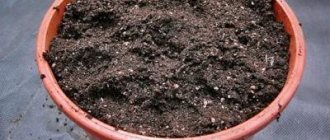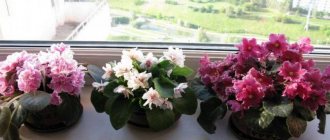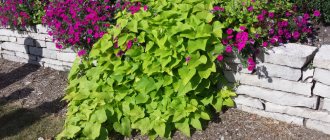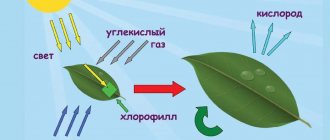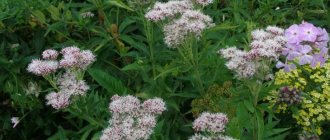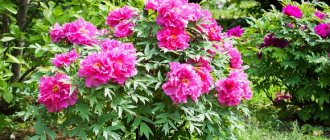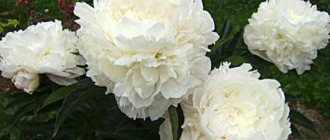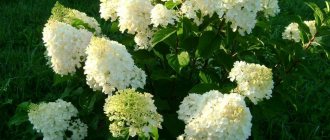Author: Elena N. https://floristics.info/ru/index.php?option=com_contact&view=contact&id=19 Category: Garden plants Published: February 26, 2019Last edits: January 13, 2021
- Rules of care
- Blood red heuchera (Heuchera sanguinea)
Heucheras are stunning beauties that you cannot pass by indifferently. Among them there are species that are striking in the color and color of their leaves, and there are also varieties with beautiful flowers, and everyone can find among them a plant to their liking. Thanks to the tireless work of breeders, heucheras have gained popularity all over the world. This plant is very popular among landscape designers. From our article you can find out what types and varieties of gherichera can be grown in the garden. You will also find answers to the following questions:
- how does heuchera reproduce?
- how to prepare a plant for wintering;
- how to protect hehera from diseases and pests.
Planting and caring for heuchera
- Planting: in spring, March or April.
- Flowering: from June to August.
- Lighting: bright diffused light, partial shade.
- Soil: moisture-absorbing, well-drained with a pH of 5.0-6.0.
- Watering: regular, as the soil dries - once every 2-3 days, in dry weather - twice a day.
- Feeding: from the second year before and after flowering with liquid mineral complexes in half the dose.
- Reproduction: seeds, dividing the bush, green cuttings.
- Pests: Weevils, leaf nematodes, butterfly caterpillars, snails and slugs.
- Diseases: gray rot, spotting, rust, powdery mildew.
Read more about growing heuchera below.
Heuchera (lat. Heuchera) is a genus of rhizomatous herbaceous perennials of the Saxifraga family, cultivated species and varieties of which are extremely in demand today in landscape design. Heuchera received its name in honor of Johann Heinrich von Heucher, a German botanist and doctor. Heuchera comes from the rocky regions of North America and is a compact bush up to half a meter tall, attracting the eye with its luxurious, exquisite leaves. Heuchera is a plant for gourmets, because during one growing season it can change the color of its leaves, more than once. No other crop is distinguished by such a palette of shades and so many options for their combinations as heuchera, and especially its modern variegated varieties.
When to plant heucheras in open ground: timing
It is best to plant heuchera in the spring, when the soil has already warmed up and the weather has improved and the threat of return frosts has passed. For example, in the central zone (Moscow region) these dates are May 15 - June 10. Or in the fall at the end of August, so that the plant takes root before the onset of frost.
In principle, you can plant heuchera in the summer, and replant it with a clod of earth and then shade the flowers. In general, container plants can be planted throughout the year.
According to the lunar calendar 2022
The optimal landing time can be selected according to the 2019 Lunar calendar:
- March - 12-17, 19-20, 27-30;
- April – 6-8, 11-13,15-17,24-26,29,30;
- May – 6-8, 10-17, 21-23, 26-28,31;
- June – 1-2, 5, 6, 9-13, 16-30, excluding 21-26;
- July - 8-12, 25-31;
- August - 2-6, 17-18, 21-28, excluding 24 and 25;
- September - 1-5, 7-10, 17-24;
- October - 4-7, 9-12, 19-21, 23-25, and 27;
- November - 13-18.
However, there are also unfavorable days for planting:
- March – 6,7,21;
- April – 5.19;
- May – 5.19;
- June -3,4,17;
- July - 2, 3, 17;
- August - 15, 16, 30, 31;
- September - 14, 15, 28, 29;
- October - 14, 28;
- November - 12, 13, 26, 27.
Botanical description
The dense bush of heuchera is formed by leathery, serrated leaves on long cuttings. The shape and color of the leaves is amazingly diverse: almost black, bright red, dark burgundy, amber, pink, purple, yellow, green and even silver leaves in all kinds of patterns and veins, specks and spots. The texture of the leaves is smooth, corrugated and curly. Heuchera blooms all summer, and even until frost, with small pink, white, cream or red bells collected in panicles. The heuchera fruit is a capsule in which seeds the size of a poppy seed ripen (about 20,000 seeds fit in 1 gram).
Heuchera has been used in landscape design for a long time. Designers divide heuchera varieties into two categories: decorative-deciduous, the ancestor of which was American heuchera, and decorative-flowering, such as red or blood-red heuchera.
- Muscari flowers - description
Why is it recommended to grow heuchera from seeds?
This ornamental plant reproduces by vegetative and seed methods, and it is the latter method that is most often recommended by experienced gardeners, since it is quite simple and effective. But there is one important nuance - with the seed method, the varietal characteristics of heuchera are not preserved. At the same time, the grower has the opportunity to get a new hybrid with an unusual color.
This is what the heuchera seed boxes look like
Those who wish to experiment are advised to resort to the optimal method, namely the seedling method. The gardener will need to purchase seeds of a suitable variety in the store or collect them with his own hands.
Features of cultivation
There are no obvious features or difficulties in growing heuchera, but this plant has characteristic features that will not hurt you to know. So:
- for decorative deciduous varieties of heuchera, if you do not have the goal of collecting seeds in the fall, it is better to remove the peduncle as soon as it appears: they grow much higher than the bush and have an unkempt appearance, which damages the decorative qualities of the plant;
- peduncles of decorative flowering varieties are removed immediately after the heuchera fades;
- Over time, the lower leaves on the bush fall off, and the heuchera looks untidy. You need to dig up the plant before flowering and transplant it together with the earthen ball into a deeper hole to hide the bald stem;
- at the beginning of growth, young heuchera leaves are bright and translucent, like flower petals, but as they mature, they thicken and darken;
- Heuchera goes well with primroses, daylilies, astilbe, bergenia and ornamental cereals.
In the photo: Variegated leaves of heuchera
Reproduction
Photo.
Perennial heuchera. Once the bush reaches three to four years of age, a bare middle may appear as the bush's output in most cases disintegrates. If this happens, then the flower should be rejuvenated.
To do this, they dig it up, divide it into several parts, and each piece is planted in a new place.
The division of the bush is carried out in May or in the first weeks of autumn. It should be borne in mind that each division should have two or three processes. If the roots of the division are excessively long, they are shortened and if there is rot on them, then all affected parts are cut off, and the cut areas are sprinkled with crushed charcoal.
Planting heuchera
When to plant
Heuchera is planted in March or April. Heuchera has good shade tolerance, so the best place for it is in the partial shade of other plants, where diffused light will fall on it. The best option is the eastern or western side, where direct sunlight falls only in the morning or evening. If this is not possible, and you have to plant it in the sun, then you need to provide the heuchera with regular and more abundant watering.
By the way, varieties with brightly colored leaves in an open sunny area become even brighter and more spectacular. And varieties with red leaves must grow in the sun, otherwise their leaves will remain green in the shade.
Heuchera is not picky when choosing soil; it can grow on any soil except acidic soil, the optimal pH is 5-6. Even a rocky area does not frighten the plant, because in nature, in its homeland, it covers the rocky shores of the Great Lakes. But the more fertile and loose the soil, the more attractive and lush the heuchera. Moisture capacity and, at the same time, good drainage of the soil on the site are of great importance. Heuchera does not tolerate stagnation of water in the roots.
How to plant
There are two methods of planting - seeds and seedlings. Heuchera seeds are simply sown in loose prepared soil and planted. But we remind you that seed propagation is not the best way, since it does not preserve the species and varietal characteristics of the mother plant, and at best, you will grow a simple heuchera with green leaves.
Hosta - planting and caring for the garden: everything you need to know
The seedling method is more reliable. Seedlings are grown in a greenhouse container and then planted in open ground to a depth of 3-4 cm at a distance of 20 cm from each other. The soil must be loose so that air can freely penetrate into the roots. Both heuchera from seeds in open ground and seedlings germinate in a month and a half.
How to care for this flower
How to care for heucheras? This does not require any special effort.
How to care for heuchera in open ground
Watering
If you overwater the heuchera, this will cause the root system to rot. The best option would be moderate watering without allowing the soil to become waterlogged. Watering is carried out in hot and dry weather, in the morning or evening.
Top dressing
Heuchera does not need frequent feeding. Mineral fertilizers are used if necessary. In the spring, fertilizers are applied before the plant blooms, and in the summer after flowering. What to feed heuchera in summer: complex fertilizers with a low nitrogen content.
Important! The plant does not tolerate an excess of organic matter.
What to feed heuchera
Pruning for winter
The issue of pruning heuchera for wintering is controversial. There is no need to remove the leaves of the plant; only dry flower stalks are removed. The foliage will protect the plant from frost. After flowering ends, the flower stalks will only take away strength from the plant. Pruning heuchera is necessary so that it maintains its beautiful appearance.
Important! In some varieties, flowering stems are pruned before flowering. This is done due to the fact that, according to some, they spoil the appearance of the bush.
Heuchera care
Rules of care
Growing heuchera is not difficult, and caring for heuchera will not tire you. By and large, she does not need any care. In the first year of the growing season, in the year of planting, the plant does not need feeding; in subsequent years, decorative flowering heuchera varieties need to be fed with a universal fertilizer for flowering plants, and decorative deciduous ones with complex fertilizers for deciduous plants, respectively.
The feeding time is before and after flowering, and the dose should be reduced by half compared to that recommended on the package.
In the photo: Heuchera planted in the ground
Watering the heuchera should be regular, as the soil dries out - once every two days, and it is better to forget to water the heuchera than to do it twice - excess moisture harms it. But on hot, dry days you will have to water the heuchera twice a day - early in the morning and in the evening. You need to pour water under the bush, carefully so that the splashes do not fall on the leaves, which may become covered with burn spots.
If you don’t want to have trouble with weeds and loosening the soil after watering, mulch the heuchera planting with peat in the spring.
Heuchera propagation
When the plant is 3-4 years old, its rosette may fall apart and you will see the exposed middle. This means that the time has come to divide the bush and plant its parts, thereby rejuvenating the heuchera. The best time for this method of propagation is May or early autumn. Divide the bush so that each division has 2-3 rosettes.
Roots that are too long need to be shortened, and those on which signs of rot are found should be cleaned of rot and the wounds dusted with charcoal powder.
- Levkoy: planting and care in open ground
Parts of the divided bush are planted in holes measuring 30x30 a little deeper than the mother plant was planted, at a distance of 25 cm from each other. After planting, it is advisable to water and mulch the area. Parts of the bush take root within a month. This method of propagating heuchera is called bush division.
Planting and caring for irises: advice from experienced gardeners
Heuchera also reproduces in another vegetative way - by cuttings. Heuchera cuttings are carried out in June or July: cuttings are cut from the mother bush as close to the soil surface as possible, but without rhizome fragments, divided into pieces of 4-6 cm, the lower sections are powdered with a root former, partially freed from leaves and rooted in a mixture of peat and sand in homemade greenhouses located in partial shade. Do not forget to ventilate the cuttings and moisten the soil in the containers. Rooting occurs in 3-4 weeks.
Pests and diseases
Heucheras get sick very rarely, and they are not afraid of pests, but sometimes they still suffer from powdery mildew, rust, gray rot and spotting. The cause of these ailments is excess fertilizer or stagnation of water in the roots of plants.
Heuchera can be treated with a fungicide to get rid of powdery mildew, which covers the leaves with a whitish coating. And spotting and rust can be defeated by spraying the heuchera twice a month with a solution of Bordeaux mixture.
In the photo: Beautiful heuchera leaves
Among the pests dangerous to heuchera are snails, slugs, weevils, caterpillars and leaf nematodes, which can be eliminated with special insecticides.
Disease and pest problems
Some people wonder why heuchera doesn’t grow? This may be due to the fact that the plant is affected by diseases or pests. However, diseases rarely affect heuchera, but powdery mildew may occur. It appears as a white coating on the leaves. In this case, the plant is treated with a fungicide.
Brown spotting can greatly spoil the appearance. It is expressed by the appearance of light brown spots that have different shapes. The spots grow gradually, and the plant is completely affected. This disease most often manifests itself in warm summers. If this disease occurs, it is necessary to spray the flower with products that contain copper. These include Bordeaux mixture or copper oxychloride. Treatment is carried out 2-3 times with an interval of 10-14 days.
Among the pests of heuchera are:
- grooved weevil. Its larvae feed on the rhizome of the plant. As a result, the top of the flower dries out. To eliminate the insect, sawdust is used. They are soaked in creolin. For half a bucket of sawdust take 1 tbsp. a spoonful of the product. Everything is mixed and scattered around the bushes. You can also combat them using mustard powder (1 tablespoon of dry product is diluted in 1 liter of water). The bush is sprayed with this solution from all sides;
- slugs They eat holes in the leaves and leave behind a silvery mucus. Against them, the soil is dusted with lime. This event takes place early in the morning or evening. During these periods, slugs are most active.
What diseases does heuchera have?
Growing and caring for a heuchera flower is a simple process. It can grow even in the conditions of Siberia or the Urals. The main thing that needs to be done is to choose the right place for planting. Otherwise, moderate watering and infrequent feeding are needed.
Types and varieties
The genus Heuchera has approximately 70 species. Many of them grow naturally in forests and woodlands of the mountainous regions of Mexico and the United States. Heuchera species are conventionally divided into mountain and forest. We will introduce you to the most popular species and varieties among gardeners, which are used in landscape design and for breeding new varieties.
Blood red heuchera (Heuchera sanguinea)
Belongs to mountain species. It has green leaves and bright red flowers. Americans call it the red bell. The leaves of Heuchera blood-red, forming a rosette, are much denser than those of other species, they are round and jagged. Some varieties of this species are distinguished by beautiful white or cream specks on the leaves. Peduncles reach a height of 50 cm. This species is cold-resistant, which is why it is so popular among our gardeners. The most famous varieties are Monet, Variegata, Hercules.
In the photo: Blood-red Heuchera (Heuchera sanguinea)
Heuchera villosa
It is distinguished by large leaves with a velvety surface and pubescent peduncles and cuttings, which is why it got its name. The Bronze Wave variety has the largest leaves, up to 20 cm in diameter, bronze color, and Rachel has not only flowers, but also peduncles of a soft pink color.
In the photo: Hairy Heuchera (Heuchera villosa)
Heuchera cylindrica
Also a mountain species, it not only has spectacular leaves, but also tall peduncles with a cloud of small flowers that seem to hover above the bush during flowering. This species is larger than others, and this attracted breeders who developed new varieties based on Heuchera cylindrical. Peduncles reach 90 cm in height; large flowers of white, pink, green and coral colors bloom on short stalks. The leaves are heart-shaped, round, green with a silver pattern or veins of contrasting color. Varieties: Greenfinch with greenish-cream flowers, Hyperion - a compact bush with a peduncle height of only 50cm and red-pink flowers.
In the photo: Heuchera cylindrica
Heuchera micrantha
According to many gardeners, this is the most spectacular of the heucheras. Its leaf, shaped like a maple, is covered with silver spots, and some naturally occurring specimens have purple leaves. The paniculate inflorescence on a peduncle 60 cm in height consists of small creamy-pink flowers with orange anthers. Among the popular varieties, the best known are Palace Purple with dark purple leaves, which is the best perennial plant of 1999, and Bressingham Bronze with bronze-brown leaves.
In the photo: Small-flowered Heuchera (Heuchera micrantha)
American Heuchera (Heuchera americana)
Growing on the shores of the Great Lakes. In the USA it is called mountain geranium. It attracts with its leaves, forming a rosette about 20 cm high. On the underside, the leaves are brown-lilac in color, heart-shaped, round, with long petioles. The panicles on peduncles 50-60 cm high consist of yellow-green flowers. Green Spice is one of the most beautiful varieties of American Heuchera with green leaves and contrasting silver spots on them. During the growing season, the leaves change shades of green from yellower to darker, the silver spots increase, and a purple hue appears around the veins.
- Blackleg - 4 conditions, the fulfillment of which will help you forget about this disease on seedlings forever
In the photo: American Heuchera (Heuchera americana)
Heuchera hybrida
This includes interspecific hybrids of American heuchera and blood-red heuchera with the participation of small-flowered heuchera. The flowers of this species resemble the flowers of the blood-red heuchera, but they are somewhat larger, as are the leaves with peduncles. White, coral, red or pink flowers bloom for more than two months. The leaf color is mostly green, but with contrasting veins and cream markings. The only drawback of these hybrids is that the flower stalks may fall due to strong wind and rain. Varieties: Cancan, Cappuccino, Beauty Color, Ruby Vale and others.
In the photo: Hybrid Heuchera (Heuchera hybrida)
Heuchera grossulariifolia
This plant is so cold-resistant that even after wintering in the garden in severe frost it can completely retain its leaves, and it is this rare quality that attracts both flower growers and breeders.
How does it grow in the shade?
Heuchera is a popular plant for shady flower beds. It is often planted together with shade-tolerant astilbes and hosts. Due to the short stature of the bush (up to 50 cm), preference is given to the foreground.
Heuchera grows well in openwork shade.
The flower feels best on the eastern and western sides of the site. You can plant it around fruit trees.
Sowing seedlings
Growing heuchera for seedlings from seeds is not difficult.
Sowing in containers is carried out from January to March.
Selection of heuchera seeds
Seeds for planting are bought in a store or collected independently from a bush after ripening.
The viability and germination of seed is limited to six months, so when purchasing, pay attention to the release date. Vacuum packaging in foil and cold storage at +4°C increases the shelf life to one and a half years.
In central Russia, not all types of heuchera are capable of producing full fruits. In order for the seeds to ripen well, leave the first 2-3 flower stalks on the bush, removing all subsequent ones.
After most of the inflorescences have withered and the fruit-pods have darkened, the stems are cut and dried. Then the seeds are removed from the boxes, freed from debris and stored in a dry, sealed container.
On a note. Propagation by self-produced seeds usually does not support the varietal properties of heuchera. The resulting specimens are close to wild species.
Preparing containers and soil
To successfully grow heuchera for seedlings, prepare the soil in advance. It should be neutral acidity, with good drainage.
You can purchase ready-made soil for seedlings in the store. Sand is added to it in a ratio of 1:10.
If necessary, prepare the soil yourself at home. To do this, mix sand, turf and peat in a ratio of 0.5:2:1, add ash or dolomite flour to it.
Sometimes gardeners use humus mixed with coconut fibers when sowing seeds.
Before planting, the soil is disinfected in one of the following ways:
- heat for half an hour in the oven or 10 minutes in the microwave;
- treated with a solution of potassium permanganate;
- pour boiling water;
- disinfected with a 0.2% solution of foundationazole.
Perlite is used for drainage.
Any container is suitable for sowing. Gardeners usually take plastic or wooden containers; special cassettes that allow plants to be planted separately from each other are also suitable.
The height of the sides should be at least 4–5 cm. Before sowing, the container is washed and holes are made at the bottom to drain excess water, filled with prepared soil, and the soil is moistened.
Sowing instructions
Seeds do not require additional preparation before planting.
- The seeds are mixed with sand.
- The surface of the soil in the container is also lightly sprinkled with sand.
- Seed material is evenly distributed over the soil surface. To do this, you can resort to a folded piece of paper, in the fold of which the seeds are placed, and, measuredly tapping the fold of the paper with your finger, move it over the container.
- Gently moisten with a spray bottle.
- Cover with film or glass.
Caring for heuchera before transplanting to a permanent place
For seedlings to germinate, good lighting is required, so the container with seeds is transferred to an eastern or western windowsill with diffused light, where the sun reaches only in the morning or evening.
Heuchera sprouts after 3 weeks: at room temperature, the first sprouts appear from the seeds at home.
After germination, the seedlings need to be ventilated: to do this, the film is removed for a while, and then completely removed. However, it is necessary to control that there is no draft.
Water the seedlings in moderation so that the soil does not dry out, but is not waterlogged. When 3–4 leaves are formed, the plant is picked into a larger container or into separate containers at a distance of 6 cm from each other.


